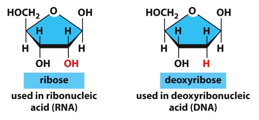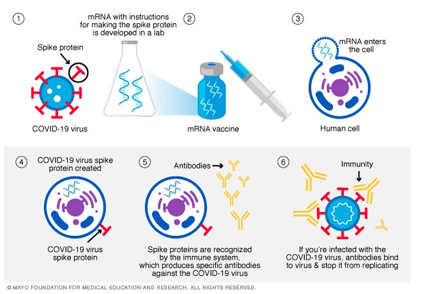Genetics - DNA replication, transcription and translation
1/28
There's no tags or description
Looks like no tags are added yet.
Name | Mastery | Learn | Test | Matching | Spaced |
|---|
No study sessions yet.
29 Terms
In which cellular locations does protein synthesis occur?
Eukaryotic cells - nucleus and cytoplasm
Prokaryotic cells - cytosol
What was the Pulse-Chase Experiment and what did it lead to?
Paul Zamecnik and Sydney Brenner were investigating how proteins were made in cells in the 1960s
Cells were exposed to radioactive uracil
RNA was synthesised with this uracil
RNA moved from the nucleus to the cytoplasm where proteins are synthesised
First clue that RNA was a messenger
RNA transports genetic instructions out of the nucleus to the ribosomes
Would later become known as messenger RNA (mRNA)
Genetic instructions carried by DNA must be transcribed into RNA
What was Ochoa and Kornberg’s work on RNA/DNA synthesis?
Discovered the enzymes responsible for synthesizing RNA and DNA (RNA and DNA polymerase)
Earned the Nobel Prize in 1959
How is RNA different to DNA in its chemical structures?
DNA uses deoxyribose sugar
RNA uses ribose sugar
Uracil has the same base-pairing properties as thymine but is present in RNA only
RNA is more chemically reactive than DNA
Ribose sugar has an OH on its 2’ carbon where deoxyribose has an H
DNA is used for accurate, long-term storage
RNA is used for transient activities before it is broken down

How is RNA different to DNA in its overall structure?
RNA is mainly single-stranded
Contains small sections of paired strands between complimentary base pairs
RNA can form a variety of 3D shapes (hairpins and loop structures)
RNA can base pair with other nucleic acids through non-conventional base pairing
How is RNA different than DNA in its function?
Many types of RNA with many functions, including catalysis
Messenger RNA (mRNA) codes for proteins
Ribosomal RNA (rRNA) form the core of ribosomal structure and catalyses protein synthesis
MicroRNA (miRNA) regulates gene expression
Transfer RNA acts as an adaptor between mRNA and amino acids during protein synthesis
Noncoding RNA is used in RNA splicing, gene regulation, telomere maintenance and more
What is the process of transcription?
RNA is synthesised from a DNA template by RNA polymerase (formed from ribonucleoside triphosphates)
RNA Polymerase I transcribes rRNA
RNA Polymerase II transcribes mRNA - process of transcription
RNA Polymerase III transcribes tRNA
RNA is synthesised in a 5’ to 3’ direction (antiparallel to its template DNA strand)
In which type of cell is mRNA processed from pre-mRNA to mature RNA?
Eukaryotic cells
Bacterial DNA does not contain introns so does not need processing before translation
What is the process of mRNA processing?
Processed before it leaves the nucleus
Processing of the ends of mRNA is essential for stability
5’ end is capped with an atypical nucleotide
3’ end is capped with a poly-A tail
Introns are removed from the RNA strand
Processes take place as the mRNA is transcribed
How are introns removed from mRNA?
Introns are removed by the spliceosome
Splicing reaction is performed by small nuclear RNA molecules (snRNA)
Bind to proteins to form small nuclear ribonuclearprotein particles (snRNPs)
snRNPs form the core of the spliceosome and assist in directing splicing
What is alternative splicing and how is it beneficial?
Alternative splicing produces two separate isoforms from the same pre-mRNA molecule
Allows more than one protein to be expressed from a single gene
Transcripts of ~95% of genes exhibit alternative splicing
Occurs when the same gene is expressed in different cell types
When is mRNA exported from the nucleus?
Mature mRNA is selectively exported from the nucleus
RNA binding proteins mark a mature and intact mRNA for export from the nucleus
Only a small fraction of synthesised mRNA is exported
Incorrectly synthesised mRNA molecules are broken and the nucleotides are reused
How does mRNA stability affect translation rates?
mRNA can be translated many times
Stability determines how much protein is translated in the cell
Sequence of mRNA affects its half life
Some have lifetimes of over 10 hours
Some have lifetimes of less than 30 minutes
How did the COVID pandemic help geneticists understand the genetic code better?
Scientists needed a quick solution
Traditional vaccines take years to develop
mRNA vaccines were developed in record time using the principles of the genetic code
How were mRNA vaccines against COVID developed?
SARS-CoV-2 virus carries genetic information in the form of RNA
Scientists sequenced this viral RNA to identify the part of the code that codes for the spike protein which allows human cell infection
Used the universal genetic code to create synthetic mRNA
mRNA would serve as a ‘blueprint’ for the spike protein but not the active virus
Spike proteins were enough to teach the immune system what to recognise and attack
When the mRNA is injected into the body, it enters cells and undergoes translation
Ribosomes in the cells read the mRNA using the genetic code to produce the viral spike protein
Protein isn’t harmful on its own, immune system detects it and learns how to defend against the real virus

What are the benefits of producing an mRNA vaccine?
Don’t require the growth of live viruses
Make them faster and safer to produce
Who were scientists that aided in discoveries surrounding the process of translation?
Har Gobind Khorana
Indian-American biochemist
Shared the 1968 Nobel Prize for Physiology or Medicine with Marshall W. Nirenberg and Robert W. Holley for research that showed the order of nucleotides in nucleic acids
Leslie Barnett, Francis Crick, Sydney Brenner and Richard Tobin
Discovered elements relating to the triplet code in translation
What did Crick, Brenner, et al.’s experiment involve?
Infected E. coli with Bacteriophase T4
Mutations in the rII region in the bacteriophage cause changes to the plaques formed
Generated mutants in the rII gene using proflavin (planar molecule that intercalates between base pairs and can cause a single indel mutation)
Brought mutants of opposite types together by recombination to produce a mix of single and recombinant mutants
A single ± mutation caused mutants due to frameshift
A double ± mutation did not cause mutants
Double mutations of the same type caused mutants
Recombining 3 mutants of the same type result in a wild-type (non-mutant) as frameshift is reverted back to normal reading
What are the main properties of the genetic code?
Degenerate - all possible combinations are used to code for an amino acid (some will code for more than one amino acid)
Non-overlapping - single base mutations only ever affect one amino acid
Universal
What is the reading frame of RNA?
Read in sets of three nucleotides (codons)
Genetic code was deciphered in biochemical experiments by Marshall Nirenberg and Har Gobind Khorana
tRNA were described by Robert Holley
All three shared a Nobel Prize in 1968
Some amino acids have more than one tRNA associated with them
Three codons do not code for amino acids but are instead stop codons
Single letter code for amino acids allows protein sequences to be analysed digitally (bioinformatics)
What are the three stages of translation?
Initiation
Elongation
Termination
What are the roles of RNA molecules in translation?
mRNA carries the genetic information
tRNA deciphers the mRNA codons
rRNA makes up the ribosome
What is the structure of tRNA and its function?
Clover leaf structure of single-stranded RNA
Some tRNA molecules can tolerate a mismatch at the third codon position (‘wobble’)
Genetic code is translated by aminoacyl-tRNA synthetases and tRNAs
Each synthetase couples a particular amino acid to its corresponding tRNA (charging)
What is the function of rRNA?
Associates with a set of proteins to form the translational machinery
Ribosome is a large complex of four RNA molecules and more than 80 proteins
RNA molecules in the structure choreograph and catalyse protein synthesis
3 sites within the ribosome
A-site — aminoacyl-tRNA site
P-site — peptidyl-tRNA site
E-site — exit site

What happens during the initiation phase of translation?
Translation initiation factors and initiator tRNA bind to the small ribosomal subunit with translation initiation factors bound
mRNA binds to the small subunit
Small ribosomal subunit with bound initiator tRNA moves along mRNA looking for the first AUG codon (Met amino acid)
Translation initiation factors dissociate
Charged tRNA binds to a codon site
First peptide bond forms
What happens during the elongation phase of translation?
tRNA molecules bind to the P-site and A-site
Peptide bond forms between the two amino acids (amino to carbonyl groups)
Large subunit translocates down the mRNA (E-site becomes P-site, P-site becomes A-site)
tRNA is ejected once unbonded from its amino acid
What happens during the termination phase of translation?
Release factor binds to the A-site
Water binds to the C-terminus of the last amino acid
Ribosome dissociates from the mRNA strand
In which direction does translation occur?
N to C direction (5’ to 3’)